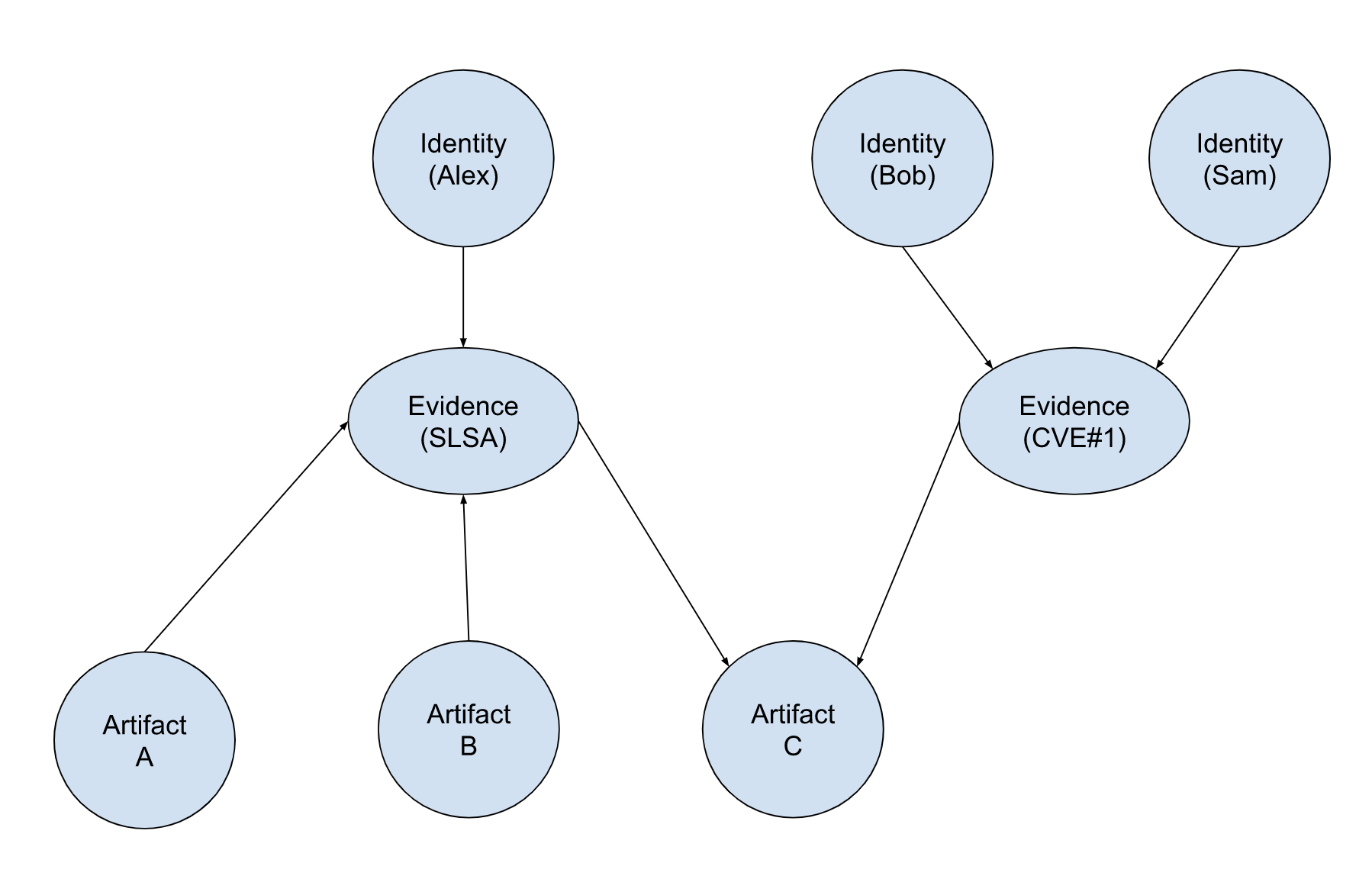GUAC Ontology
The problem with software supply chains
Software supply chains are more sophisticated than ever and so are their compromises. Because of this, various tools have spun up around software metadata, such as SLSA/In-toto and SBOM. To better understand the security posture of a software, we need to know the software supply chain properties of each used artifact. To solve this problem, we built a software supply chain knowledge graph, GUAC (Graph for Understanding Artifact Composition). GUAC allows us to efficiently query information about software supply chain properties and efficiently update the state of the supply chain.
Distilling an ontology for GUAC
At a low level, a software supply chain is a series of actions carried out by actors to produce artifacts. Generally speaking, determining the quality properties of an artifact boils down to how much we trust actors, what information can we glean from their actions, and how artifacts relate to each other.
By building a universal graph, we are able to answer questions such as:
- Is this artifact affected by this vulnerability as reported by this scan?
- Has this artifact been reviewed by a trusted individual?
- Was this artifact involved in this security incident?
We believe that in order to be able to answer these questions, we just need to appropriately collect the following information:
- Evidence collection about actions
- Actors and actions
- Software and its lineage
With this, we are able to transform any informational query into one that involves all three (artifacts, actors, actions).
Mapping the three elements of supply chains to a universal graph
All three elements can be collected for public information and used to construct a semantic tree about their respective elements. This allows us to turn the collector functions into a bijection and prevent the loss of data during the collection process.
We develop these bijections in the collector to build trees of evidence, trees of actions, and trees of software lineage that we can then connect to each other to build the graph.
The evidence tree
The first tree of information is the evidence tree. For each piece of evidence collected we are able to build a tree of the following elements by following the ITE-6 processing model:
- DSSE layer: Creates an edge between an actor (identity) and an action
- Subject layer: Creates an edge between an action and a software instance (e.g., identified by a purl and a hash)
- Predicate layer: Creates an edge between a collection of software instances and an action (e.g., a series of packages and environmental tools)
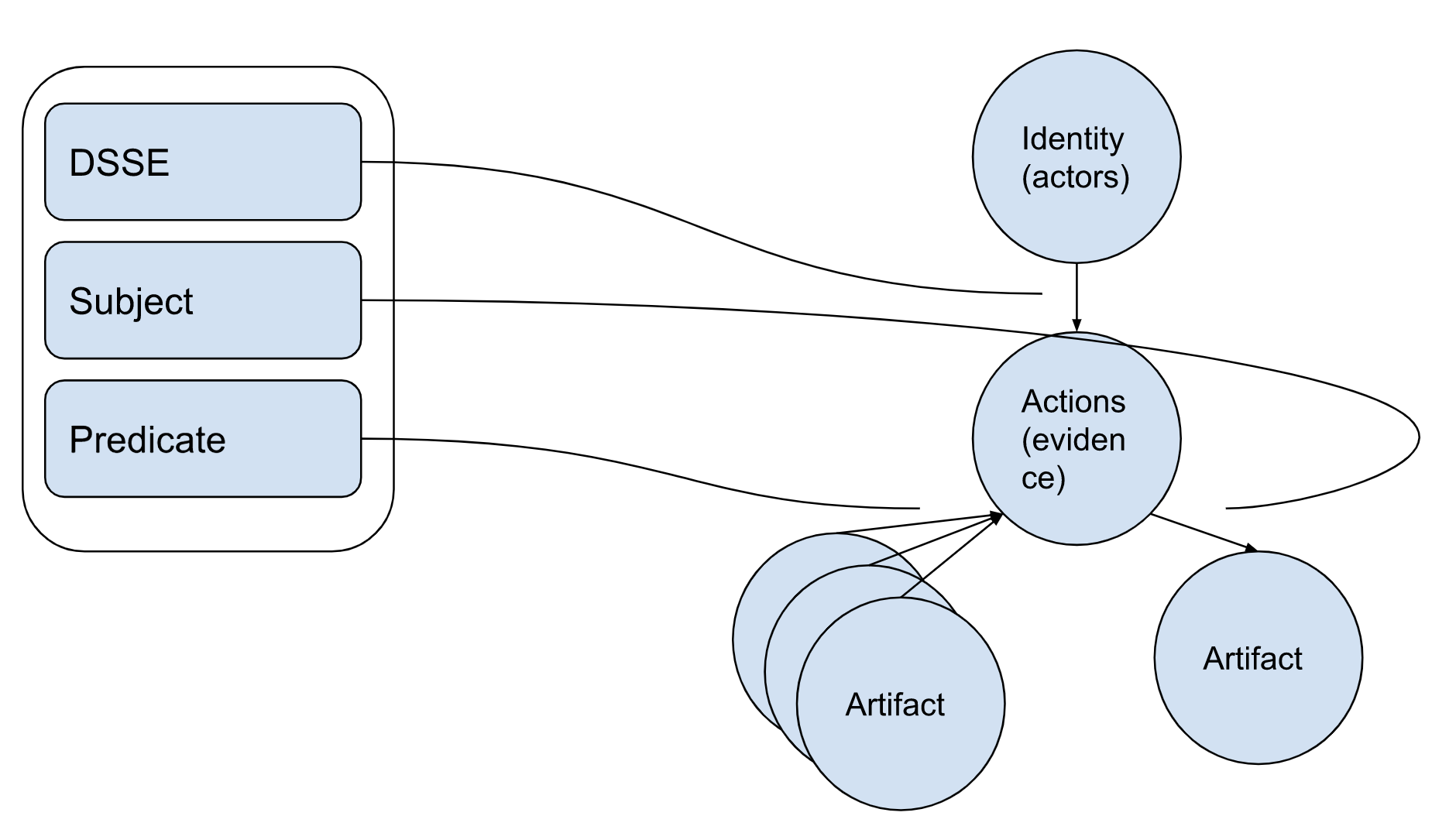
These trees can be broken down to further separate actions and evidence. For example, an SBOM using SPDX can be broken down into a series of evidentiary information that separates each relationship information with a separate one.
The actor tree
The actor tree attempts to model the trust relationships between actors, as well as the provenance information between actors and claims. At an ideal level, this portion of the graph allows us to model such trust relationships between actors as a separate operation. While there are many standards for trust models (e.g., PKIx and PGP), the fundamental property of trust is that it can be either provided de-facto (i.e., by a policy mechanism) or it can be compounded (i.e., it can be computed as a function of a collection of the former type).
For example, an X509 certificate allows us to build an identity tree of the following nature:
- A certificate represents an identity
- A certificate chain represents a path of trust between a series of identities
This tree can be collected from public identity sources (e.g., a certificate transparency log, or a pgp keyserver) and used to create a collection of trust trees.
The software tree
Finally, the software tree represents a series of software properties that relate to their logical collection up to their “physical instantiations”. This can be easily modeled using a pURL semantic, which describes a software artifact. Take for example the following purl: pkg:pypi/django@1.11.1. It can be used to model software relationships with the following properties:
- A software type (pkg)
- A software repository (pypi)
- A software name (django)
- A version (1.11.1)
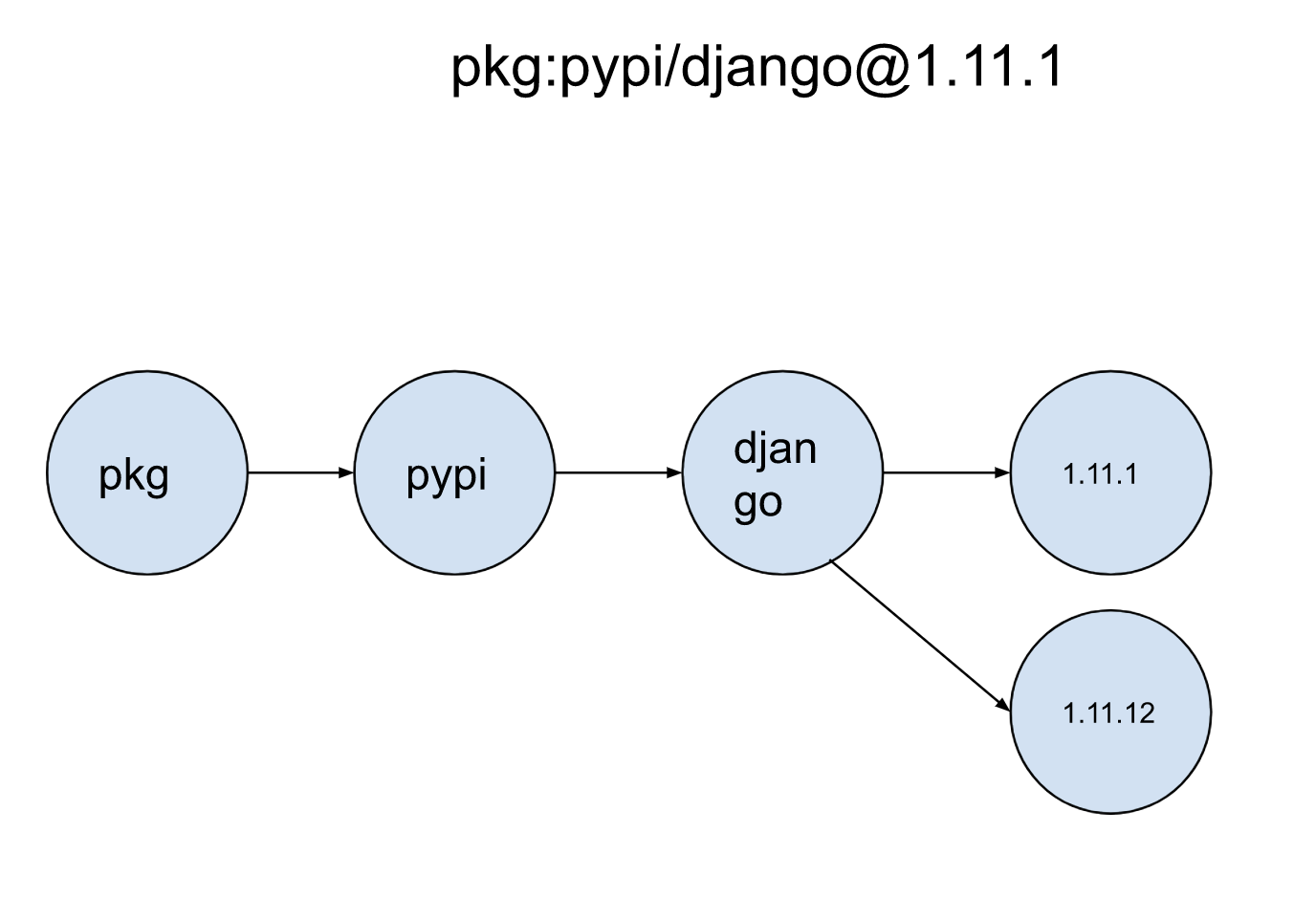
Combining trees for more expressive search queries
The three trees combine as following:
- The hash in the software tree is the artifact in the evidence tree
- The identity in the evidence tree is the signature in the actor tree
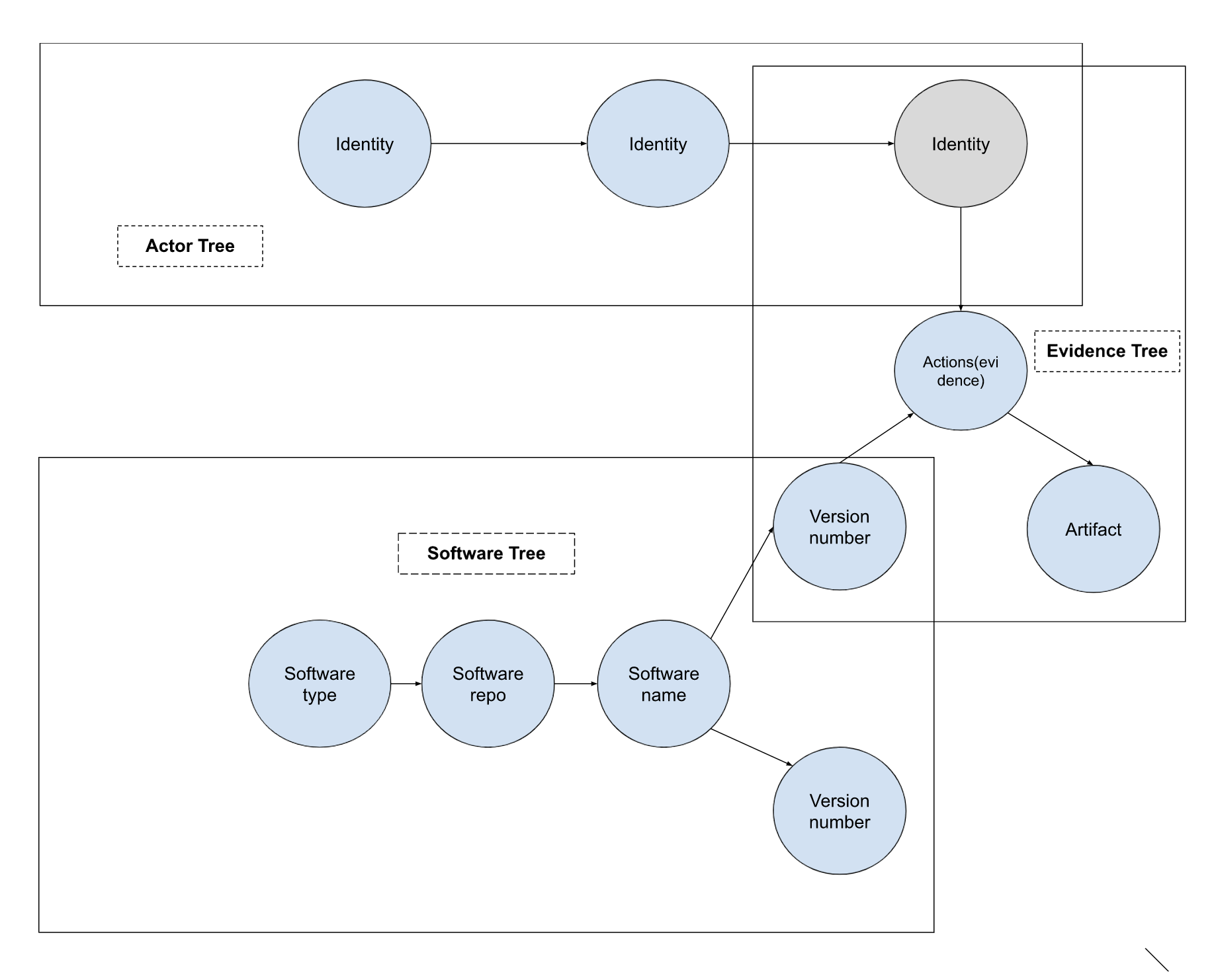
With this in mind, GUAC queries can be defined as:
- Network structure tests (e.g., reachability)
- Node property and test
Use cases
Identifying connected components
Given a starting node, retrieve the entire connected component of it.
Example diagram
An organization wants to dump all the metadata and assertions related to an artifact.
Query: Connected component given start node artifact C
Approach: Starting from artifact C, get all first neighbor evidence nodes, then get the connected component of each evidence. The result subgraph is the connected component starting artifact C
Result:
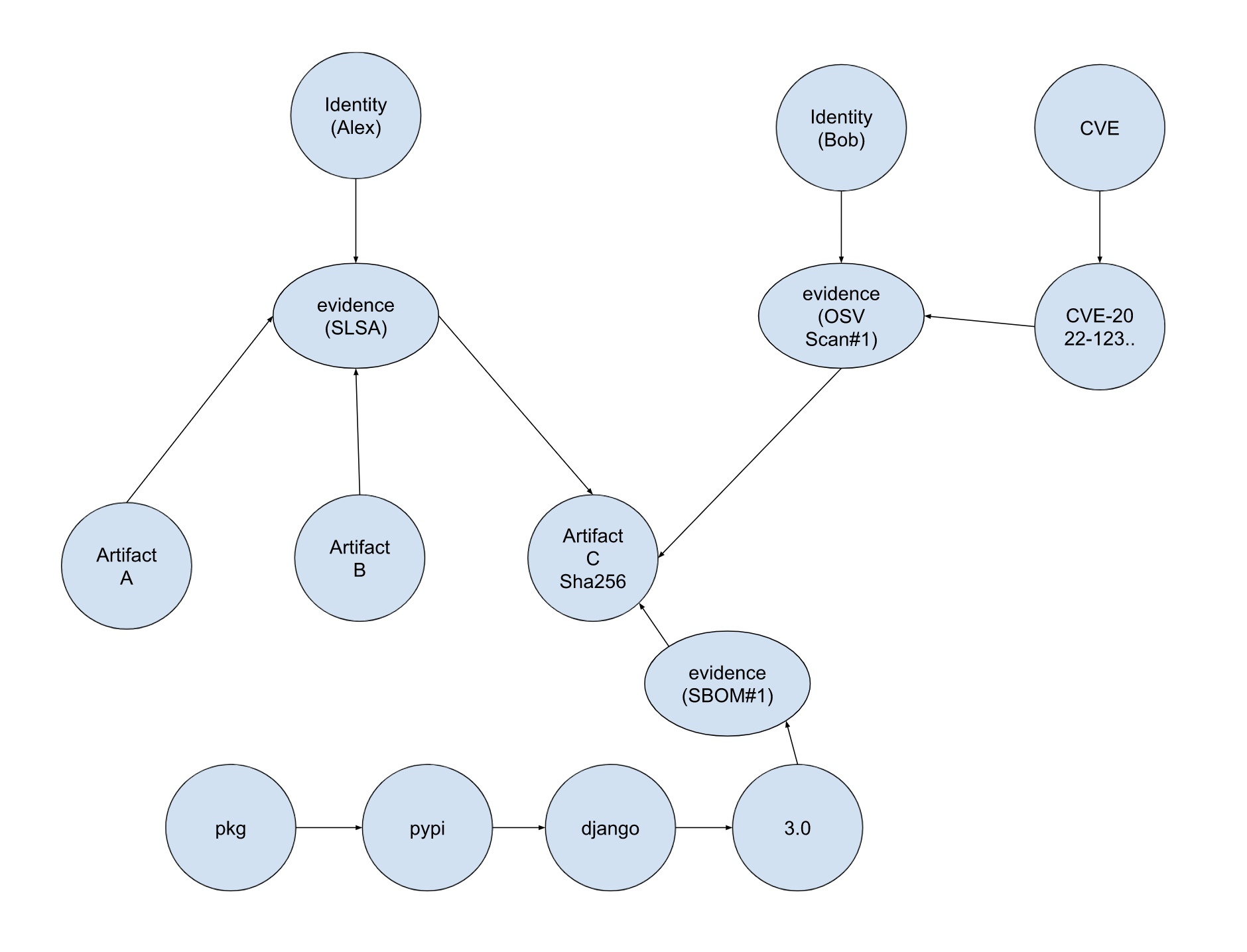
Reachability
An organization wants to check if its software is affected by a recently published vulnerability with an assigned CVE number, signed by a specific vulnerability database.
- Query the GUAC Graph such that based on the artifact nodes of the software, can you reach the CVE evidence, then the vulnerability database? If yes, then the software is vulnerable to it.
Example diagram
Query: Is artifact C affected by CVE#2, and has that report been done by the national vulnerability database?
Approach: From Identity tree, determine which nodes belong to that class of identities. Is there a path from the artifact -> CVE -> any node in the class of identities? Result: From identity tree, NVD identities are NVD#Root, NVD#2,NVD#3.
Walk the path (artifact C -> SLSA evidence -> Artifact A -> CVE#2 evidence-> identity NVD#3)
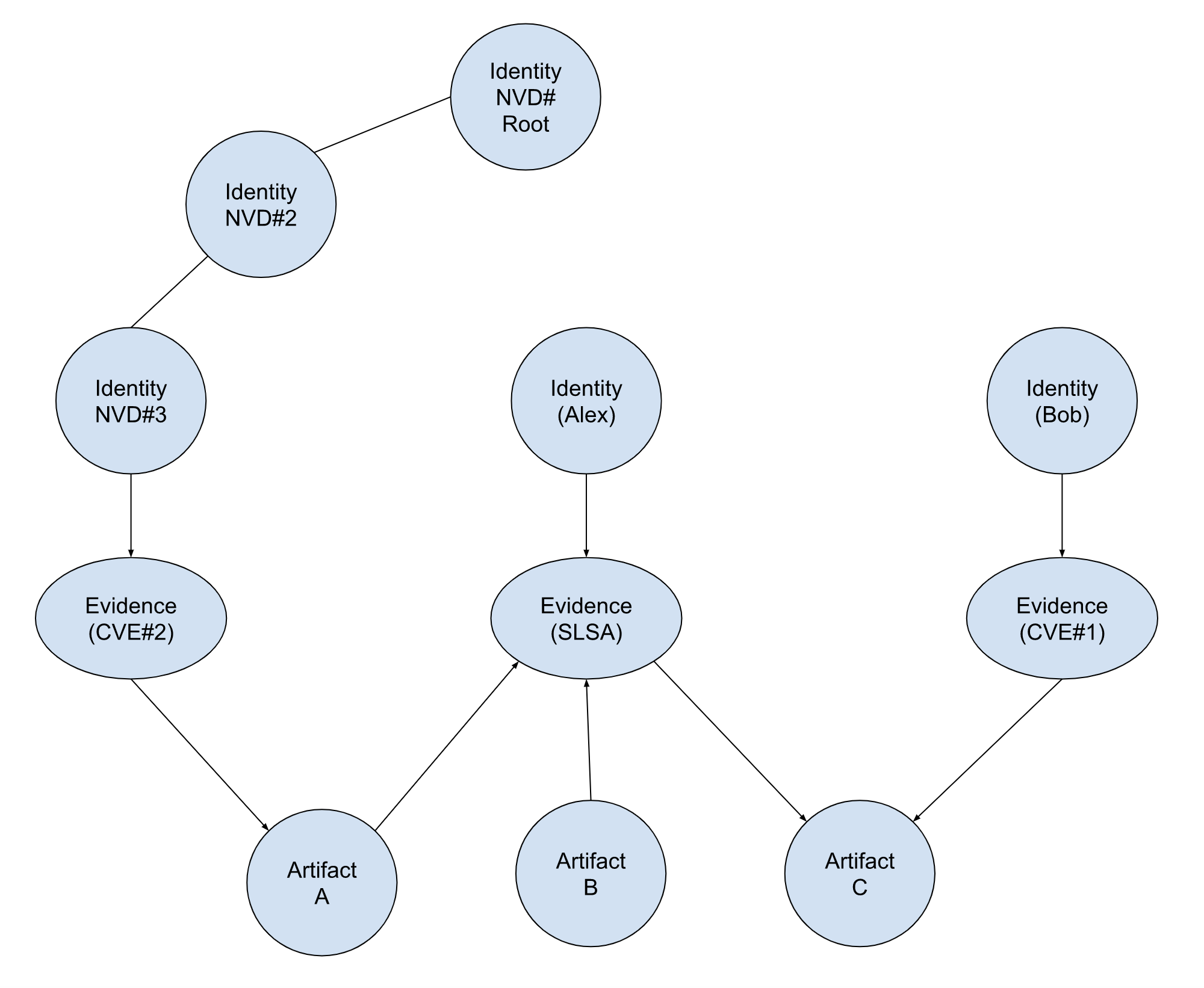
This does not cover a case in which two different reports describe the same artifact and do not agree on the security posture of an artifact.
Counterfactual (not part of the v0.1 BETA)
An organization wants to check the vulnerabilities that affect its software.
- Query the GUAC Graph such that based on the artifact nodes of the software, do they have any neighbor CVE evidence?
Example diagram
Query: Is artifact C affected by any vulnerability?
Approach: Using first neighbor search, is there any neighbor CVE evidence for artifact C?
Result: Using first neighbor search, Bob signed CVE#4 evidence, while Sam signed CVE#5 evidence. This is conflicting information. Bob and Sam disagree about the CVEs affecting artifact C.
Conflicting information should be flagged as something to be analyzed further.
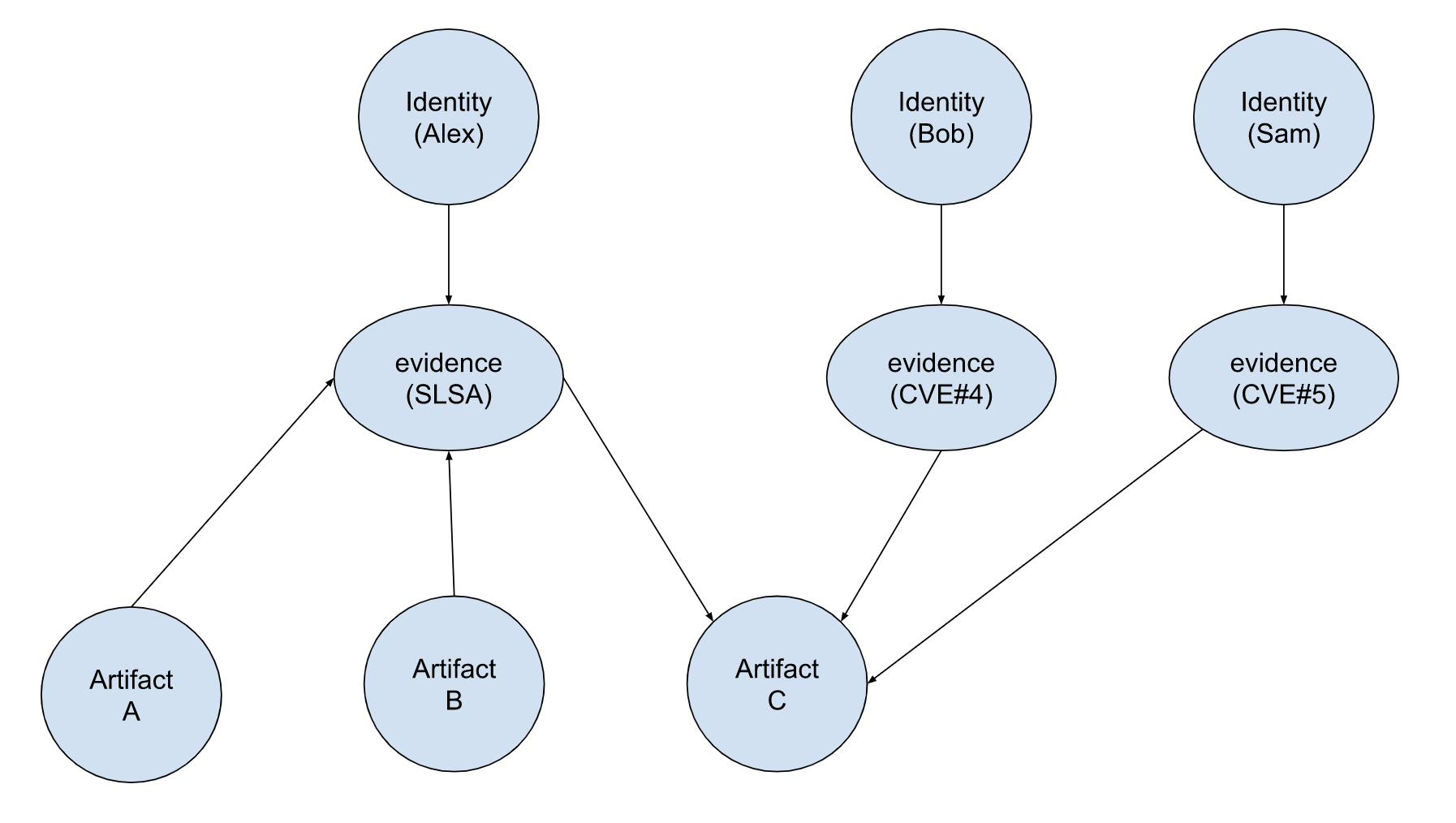
Hypergraph semantics (not part of v0.1 BETA)
A hypergraph is a graph in which hyperedges can connect to a subset of nodes rather than two nodes. Hyperedges can be used to make logical groupings for nodes that represent the same thing, and they may appear in GUAC in couple of ways:
- Artifacts: Identical artifacts or packages. For example, an SLSA document describing an artifact with multiple hashes makes the implicit claim that these hashes describe the same content. These hashes of the same artifact could be grouped together in a hypergraph.
- Identities: The same identity has multiple public keys, or multiple people represents an identity.
Agreement over same CVE evidence
